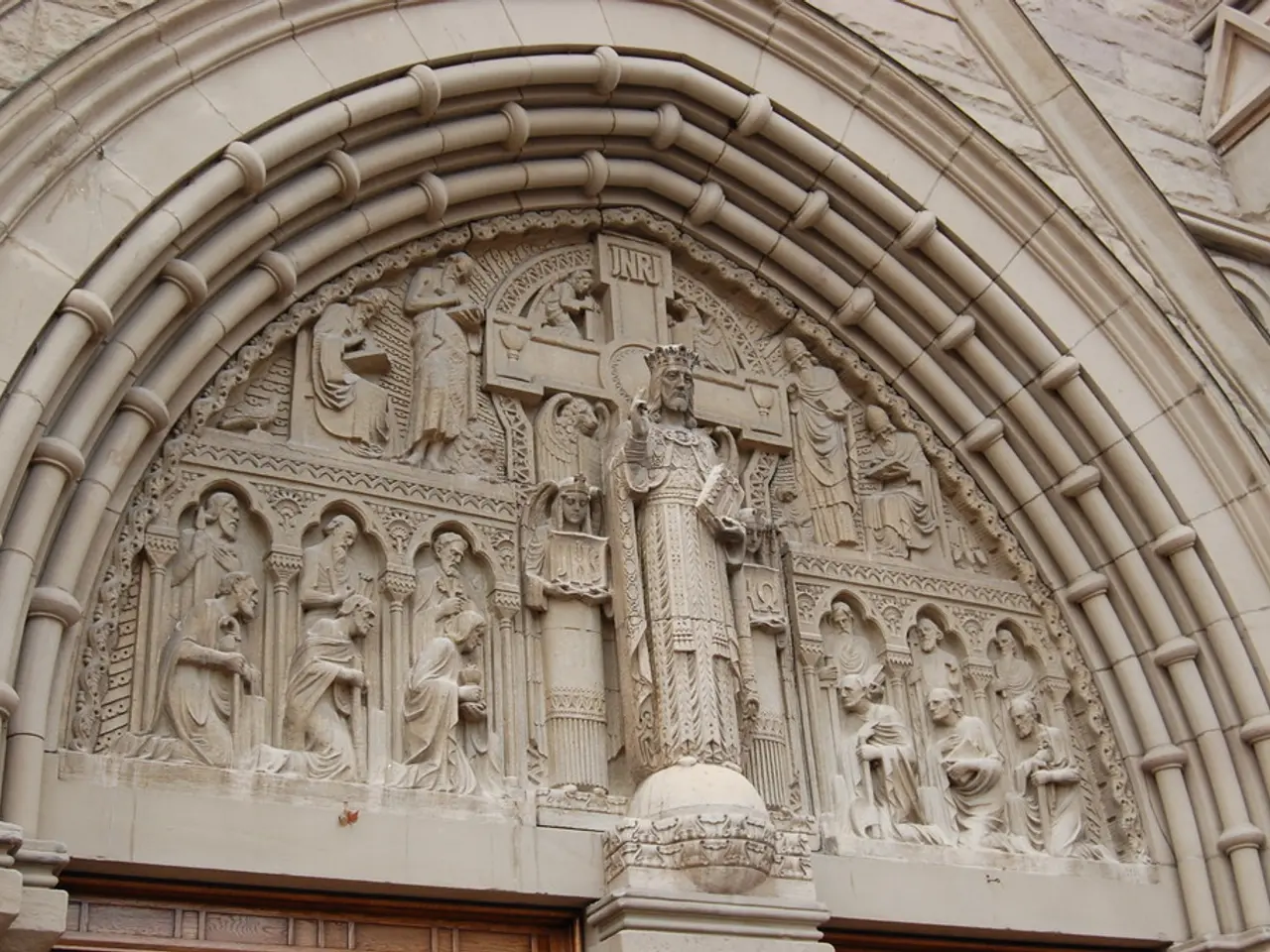Debate Erupts over Statue Removal in Mexico City, Politicians Clash Heatedly
In the heart of Mexico City, a political and cultural storm is brewing. The removal of the statues of Fidel Castro and Che Guevara from the Monumento Encuentro in the Cuauhtémoc borough has ignited a heated debate, with opposing views on legality, heritage, and ideology.
The statues, installed in 2018 to commemorate the duo's 1955 meeting in Mexico City, were removed by Cuauhtémoc Mayor Alessandra Rojo de la Vega in July 2025. Citing irregularities in their installation, such as the lack of proper authorization from the Committee on Monuments and Artistic Works in Public Spaces (COMAEP) and complaints from local residents, Mayor Rojo de la Vega framed the removal as a legal and symbolic act of local autonomy [1][3].
However, the Mexican President, Claudia Sheinbaum, has condemned the move as "illegal," "intolerant," and "hypocritical." Sheinbaum has demanded the statues be returned and relocated through proper channels, pointing out an ironic political contradiction given that Rojo de la Vega vacationed in Cuba, where these figures are historically celebrated [2][5].
The statues have polarized opinion. Supporters view them as symbols of solidarity with revolutionary ideals and Cuba-Mexico friendship, while opponents see them as controversial due to the complex legacies of both figures, including accusations of authoritarianism and violence [4][5]. Artistically, the statues depicted Castro and Guevara seated in military attire, relaxed but not engaging with each other visually, which has also fueled cultural discussion about their representation [3][4].
The removal reflects a clash between local legal proceduralism and broader political-cultural symbolism, with disputes encompassing legality, heritage, ideological divides, and historical memory between Mexico’s left-leaning leadership and opposition forces [1][2][3][4][5].
Meanwhile, Mexico City is undergoing changes, including renaming streets and removing statues. President Sheinbaum has presented a new comprehensive modernization plan for the CDMX Metro, aiming to improve the city's infrastructure and public transportation [6].
As the debate continues, the removal of the statues serves as a reminder of the complex interplay between politics, culture, and history in Mexico City.
[1] La Jornada, "La Alcaldesa de Cuauhtémoc saca los estatuas de Che Guevara y Fidel Castro del Monumento Encuentro," July 1, 2025.
[2] El Universal, "Sheinbaum condena la extracción de estatuas de Che y Fidel en Cuauhtémoc," July 2, 2025.
[3] Milenio, "La extracción de las estatuas de Che y Fidel en Cuauhtémoc: ¿legales o ilegales?" July 3, 2025.
[4] Reforma, "El debate sobre las estatuas de Che y Fidel en Cuauhtémoc," July 4, 2025.
[5] El País, "La extracción de las estatuas de Che y Fidel en Cuauhtémoc: una clash entre la legalidad y la simbología," July 5, 2025.
[6] El Financiero, "Sheinbaum presenta su plan de modernización del Metro CDMX," July 6, 2025.
This article is brought to you by Mexico City Post, where you can share your thoughts on this and other topics on our social media platforms. Find us on Facebook, Twitter, and Instagram.
The removal of the statues of Fidel Castro and Che Guevara from the Monumento Encuentro in Cuauhtémoc borough has become a hot topic in the realm of policy-and-legislation and general-news, sparking heated debates over legality, heritage, and ideology. The statues' removal was a point of contention between local authorities, led by Cuauhtémoc Mayor Alessandra Rojo de la Vega, and the Mexican President, Claudia Sheinbaum, who condemned the act as "illegal" and "intolerant."







